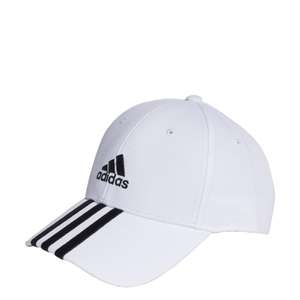
- Home
- Fashion & Accessories
- Clothes

Clothes Deals & Offers
834 active deals1,391,214 commentsAll Clothes discounts and offers overview - April 2024

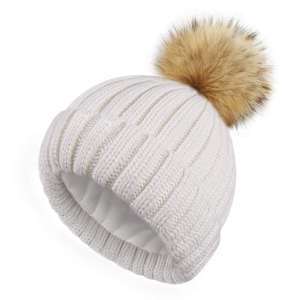
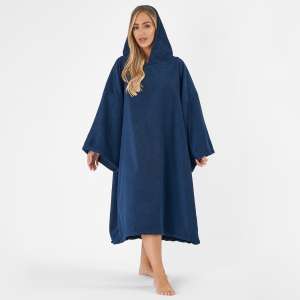
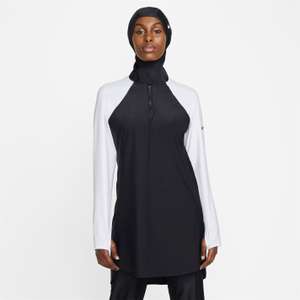

 hotukdeals
hotukdeals hotukdeals
hotukdeals 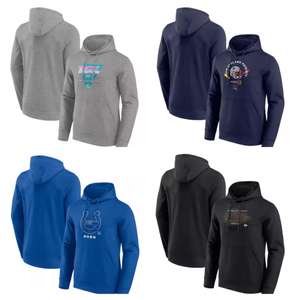
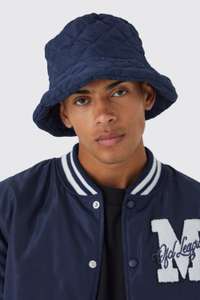
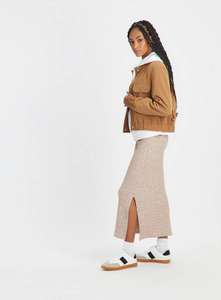
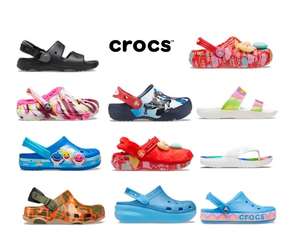
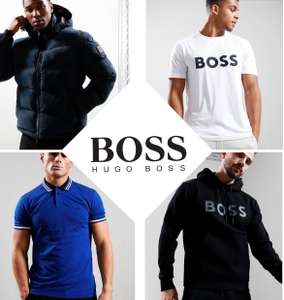

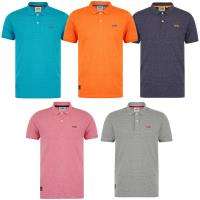

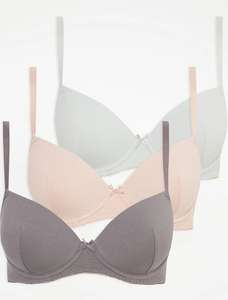
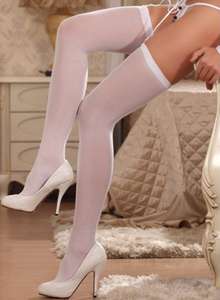

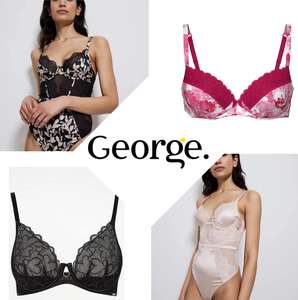
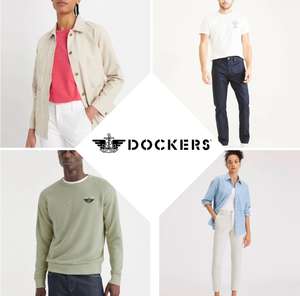
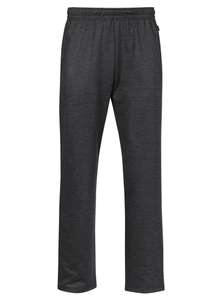
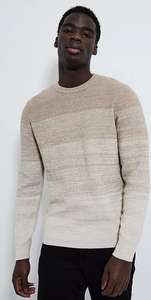
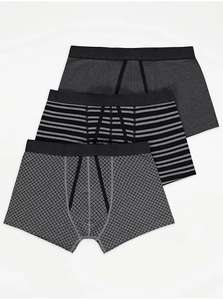
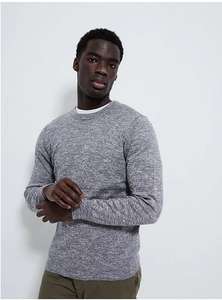
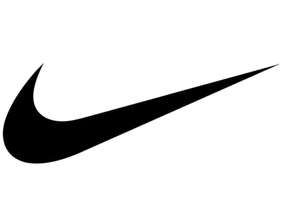
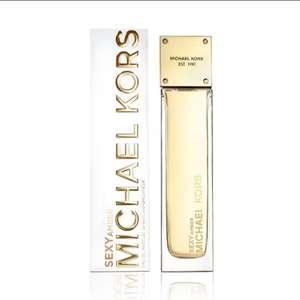
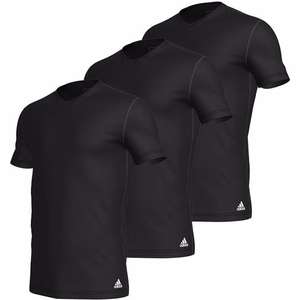
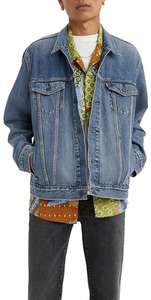

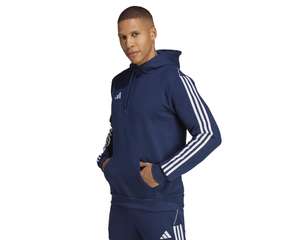
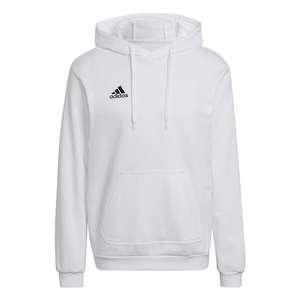
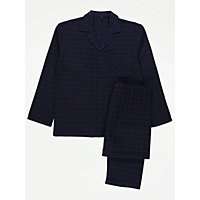
Great Outfits with Cheap Clothes
In the modern world, you are what you wear, or at least it feels that way sometimes. The clothes we choose to put on in the morning help to define who we are. They boost our confidence, reflect our personalities, and are – when you get down to it – just great fun to experiment with.
If you need to renovate your wardrobe and add some exciting new outfits, you’ve come to the right place. This hotukdeals buyer’s guide will explain how to find the best clothing deals for UK customers. Don’t pay over the odds for the labels you love. There are ways to save money, and hotukdeals has the lowdown.
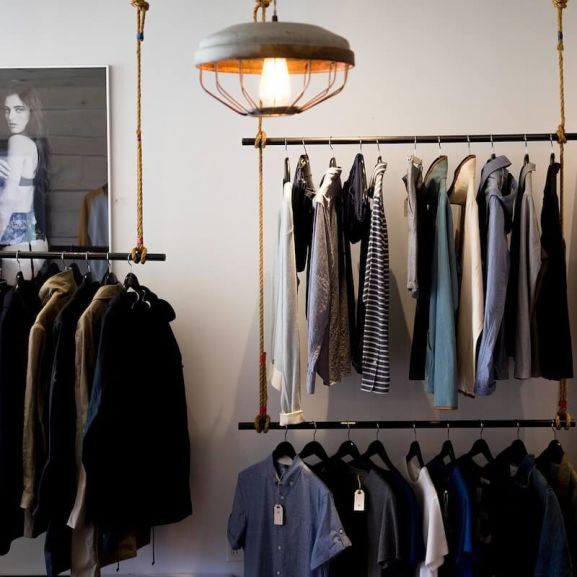
Fashion for Men, Women and Children
Firstly, let’s get a little history out of the way. Today’s clothing retail scene is diverse, massive and dynamic, and it’s been that way for centuries in the UK.
From the middle ages onwards, cities across the UK specialised in weaving and draperies. First wool and silk, then cotton became the driving force behind economic development as workshops turned into factories and British textiles dominated the world.
In the process, the way we buy clothes evolved as well. From Britain where the choice was limited to stiff shirts, the odd jacket and woollen trousers, by the 19th century, people could choose from a diverse selection of colours, materials and styles. Designers like Beau Brummell created classic looks that were adopted by royalty, then the wealthy middle classes.
As demand grew for fine fashion, so shops developed to cater for that market. Modern legends like Burberry and Pringle emerged in the 19th century, as well as department stores like Liberty and Harrods. By the end of the century, Marks & Spencer and similar companies were making high-quality clothes available to all.
Fashions changed during the 20th century, often at a dizzying rate, but retail stayed the same. Until, the 1990s, that is, when globalization and the internet came along, sparking a boom in low-cost, clothing retail. Stores like Primark burst onto the scene, as well as international brands like Gap, French Connection or Uniqlo.
Now, you can order designer suits by Armani, dresses by Givenchy, Gap jeans and Burberry coats from a wide range of online stores, and in a variety of different ways. In many ways, it’s a golden age for clothing buyers. Here’s how to get the best possible deal.
Places to Make a Clothing Purchase
The modern fashion scene offers plenty of different places to pick up particular garments. Take a ladies blouse, for example. The same kind of blouse could be ordered online, bought at markets, department stores or boutiques (or even vintage shops). Each option has its own features and leading brands, so here’s a quick introduction:
Budget clothes retailers – The first place to look for everyday fashion purchases is probably a low cost retailer like Primark, Zara or H&M. These companies source their clothing from less well-known designers, and often in-house teams. Their production facilities tend to be in low-cost economies (though assured by quality control and ethics teams), resulting in affordable prices. Quality varies, as you’d expect, and nobody should count on a Primark sweater lasting forever. However, as millions of customers will attest, shops like Primark deliver quality that is more than adequate, at incredibly attractive prices.
Premium everyday clothing retailers – There’s no clear division between affordable retailers and what you might call premium clothes shops, but you know it when you see it – or wear it. In this bracket, you’ll find stores that offer a wide range of clothes at slightly higher prices. At companies like Next, River Island, Gap or French Connection, you pay slightly more for the brand and the quality that comes with it. At Marks & Spencer, the extra cost tends to be based more around reliability than brand glamour. But the result is the same: retailers that you can count on to deliver attractive, durable everyday outfits.
Upscale boutiques – Boutiques are very different beasts. Generally smaller than ordinary clothing retailers, they prioritise personal service. They are the kind of places where you will be attended to be a shop assistant as soon as you arrive, who will offer suggestions from the boutique’s range. Boutiques are usually associated with a single designer or design house, and pride themselves on keeping an up to date collection from that designer’s portfolio. Famous women’s boutiques in London include Anna Park, Diverse and Feathers, each one with their own ambience and specialist areas.
Luxury Fashion – At the end of the range there are the numerous luxury fashion labels making high fashion usually at high prices. But even on brands like Hugo Boss, Ralph Lauren, Calvin Klein, Tommy Hilfiger or Armani there is some saving potential if you can live with not wearing the it-piece from the latest collection or buying your new designer piece in an online shop.
Online clothing retailers – These days, bricks and mortar clothing shops are under fire from online retail, and they have been for some time. Online stores like Boohoo, Asos, Zalando, Forever 21 and even Amazon have claimed large chunks of the fashion market, generally in the younger female segment, with their slick marketing and low prices. These sites don’t just provide a comprehensive selection. They also offer flash sales to members and newsletter subscribers (so don’t forget to sign up), as well as plenty of promo code deals, which you’ll find at the hotukdeals clothing listings.
Online fashion clubs – There’s another great online option for fashion fans, and it’s rapidly rising in popularity. Online fashion clubs like the Zalando Lounge or Amazon BuyVIP allow customers to sign up for an exclusive membership. After that, members receive regular e-mail and smartphone updates, which tell them when to log on for quickfire sales of the latest designs. These sales don’t last long, and stocks are limited, but if you are quick on the draw, they can be the best way to pick up designer outfits at everyday prices.
Vintage shops and markets – Not all fashion fans are interested in today’s catwalks. There’s actually a burgeoning vintage fashion scene, as creative clothes lovers seek to recapture historic looks, from flapper dresses to 1950s cardigans. Some of the best places to shop for vintage clothes include Beyond Retro and Rokit, along with charity shops (Oxfam and Shelter probably have the best fashion selections).
Supermarkets – Don’t exclude good old supermarkets from your fashion search either. Tesco, Asda and Sainsbury´s often have large clothing sections, and their prices tend to be relatively low. They are especially handy for buying children’s clothes (and wet wipes, toys or food), and their offers feature regularly on the hotukdeals listings.

Things to Think About When Buying Clothes
When you purchase clothes, it’s easy to be tricked into buying inferior quality items, or garments that just don’t fit. Try not to fall into that trap, and bear these suggestions in mind whenever you shop:
Material content – When you pick up a garment in-store, check the label to find out the fabric content. It may be labelled as a cotton short, but still be well under 100% cotton. In general, go for undiluted, 100% silk, cotton or wool, as these will last longer than synthetic materials. There are some exceptions, such as lycra for stretchy jeans and exercise gear, but as a rule, avoid clothes with combinations of materials.
Feel – Along with the fabric content, check how your garment feels to touch. You can sense inferior qualities of wool or cotton from their rough, thin feel. Rub it against your skin (after all, that’s where you’ll be wearing it) and go with your gut. We’ve got a pretty good instinct for quality.
Zips – many garments involve zippers, and the way these are integrated is a good sign of quality. On well-made clothes, there should always be a placket placed over the zip to conceal it and protect the fabric.
Pockets – If your garment has pockets, make sure that they aren’t made from flimsy lining material. Ideally, they should be made from sturdy cotton or other strong fabrics, and properly stitched into the garment.
Measurements – Before you start shopping for clothes, you need to know your measurements. Without them, how can you know that the clothes you pick online or in-store will actually fit (without trying them on, of course)? Take your chest, waist, inner leg and hip measurements, so that there are no ambiguities.
Label – You’ll often find items in second hand shops or discount retailers that look a lot like designer gear, have a label, but aren’t actually anywhere near as well made. Unless they pass the feel test and fit like a glove, double check unfamiliar labels online or with an expert to make sure they are what they claim to be.
Cut – By the cut of an outfit, we mean the way the various pieces of fabric that make it up have been cut and assembled. It’s a term that applies particularly to suits and dresses, and is something you need to think about when making a purchase. For example, trousers come in slim and baggy cuts, as do suits. Some suit jackets have figure-hugging cuts, while others have a less defined boxy cut around the waist. They will suit different body shapes, so think about which one makes the best sense.
Inside Labels – All clothing comes with informative labels on the inside, and this information can be really important in your purchasing decision. It should tell you where the garment was made (important for ethical reasons, or if you are looking for authentic Italian or British designs), and it should also tell you about how to wash the garment. If it needs fiddly hand washing, that could be a sign of quality, or an indication that you should go for a less high-maintenance material.
H&M Close the Loop: Sustainable fashion through recycled clothes

How to Buy Children’s Clothes
If you are buying clothes for kids, you won’t lack for options. The UK has a thriving children’s fashion sector, with big names like Debenhams, Next, Monsoon, Primark and House of Fraser, as well as innumerable smaller artisan companies like Pumpkin Patch. Wherever you shop, it pays to bear these things in mind.
First off, make sure you are purchasing the right size of item. Children come in all shapes and (within reason) sizes, and age labels on children’s clothes are a guide, not a scientific measurement. The measurements for boys´ clothes and girls clothes differ sometimes significantly.
Now, think about what your child would actually want to wear. Are they Disney fans (in which case checking out the hotukdeals Disney listings would make sense) or are they into LEGO, Transformers or Pokemon? Think about their favourite colours, their personalities and the quirks. Or, better yet, have them right there to tell you what they want.
When your children reach a certain age (usually above two), it might make sense to buy clothes that are slightly too big for them. Not drastically large, just a size or two. You can use a belt to fasten boys’ trousers, and adapt many girls outfits to conceal any bagginess. That way, you can cut back on the number of outfits you’ll need to purchase as they grow.
Remember that kids tend to attract stains and dirt as well. They will be playing in the sand, the mud and the grass, so buy clothes that you know can be washed easily. There’s no sense in buying large collections of boutique kids clothes, either. Go for affordable brands like M&S or Tesco – and save the boutique outfits for a couple of purchases, not entire wardrobes.
Most clothing shops selling baby clothes and children’s clothes also run seasonal sales (back to school being a favourite). Check out these sales, as they can deliver massive savings on essentials like sweaters, socks and dresses.

Finding the Best Bargains for Men’s and Women’s Clothes
But what about adults? How can we clothe ourselves in gorgeous outfits without destroying our bank balance? Here are some ideas to buy men´s clothes and fashion for women for the best prices:
Separate basics from special items – If you are building a designer wardrobe on the cheap, it makes sense to establish which items are worth spending money on, and which ones are dispensable. Vests, t-shirts, socks, pants, bras, even jeans can often be snapped up for very little, leaving you a little extra cash to buy a beautiful jacket, shirt or range of accessories.
Time your purchases like a pro – As noted above for children’s clothes, if you buy clothes at the right time, you can slash the price of dressing well. As a rule, shop for winter clothes in summer and summer clothes in winter, and keep an eye out for summer holiday flash sales, January Sales promotions and general money off deals.
Think about longevity – Fashion trends come and go, but ideally you should buy items that you can wear for years. Naturally, your own tastes will evolve, but good clothes are well, good clothes. Buy items that are fashionable, but also the type of garment that can be worn in a range of styles. And buy clothes that you genuinely love, not for their trendiness, but for their quality.
Use store loyalty cards and credit cards – Major banks offer credit cards that accumulate points to spend at clothing retailers, while retailers themselves often offer credit cards that are linked to in-store purchases. Both are good options for savvy shoppers who can control their credit card spending, as are loyalty cards which also build points as you shop.
Use cashback and coupon sites – You can also make huge clothing savings by shopping with cashback sites like Quidco, or the coupon deals on hotukdeals. Clothing is one of the areas of the economy with the most discount offers, with new deals every day, so always check whether your trousers, shirt or hat features in our listings before making a purchase.
Look after your clothes carefully – Another way to avoid spending money is to avoid damaging your favourite outfits. Sometimes accidents happen, that’s a given. However, you can avoid mishaps like shrinking your clothes in the wash by only buying items that are machine washable. Many require dry cleaning, but with our hectic lifestyles, it’s easy to just throw clothes in the washing machine drum – with fatal results.
Shoes and Essential Accessories for Fashion Lovers
Building a wardrobe full of devastating outfits isn’t just about picking the right dresses or suits. With the right accessories in your possession, you can create stunning looks and experiment with different ideas, so always keep your collection well stocked. Here are some of the accessories you might want to keep in mind as well as the pieces that keep us all walking comfortably – shoes:
Shoes– Shoes are an essential part of every look and satisfy very practical needs: They protect our feet from outer influences. There are countless styles of shoes for fashion lovers including classic ones like brogues, sneakers, loafers, heels and slippers. Special shoes for men and women are available for the seasons like boots for winter or sandals and flip flops for summer. Shoes for special activities come as trainers for sports, outdoor shoes for hiking or working shoes.
Jewellery – Men and women alike should have a stock of jewellery – Whether its designer watches, rings or pendants for men, or necklaces, bracelets, earrings and dazzling diamond rings for women. You can head to high street jewellers like H. Samuel or Pandora, or even snap up vintage pieces from auction houses like Barnebys.
Bags – A good bag is a multi-purpose thing of beauty, carrying your essentials and adding a gorgeous accent to your outfits. Check out UK favourites like Burberry, Michael Kors or Louis Vuitton for some of the most spectacular designs around.
Fabric accessories – Soft, alluring and colourful, a cravat, tie, shawl or scarf can add an element of mystery or the exotic to anyone’s outfit. Check out Dobell for cravats, Gant for men’s shawls, Matalan for women, and Chinti & Parker for superb cashmere scarves.
Umbrellas, parasols and canes – Practical and attractive, a cane or umbrella adds a touch of quirky vintage elegance to outfits. You’ll find authentic bamboo canes from boutiques like James Smith & Son, and some of the most beautiful umbrella designs around can be found at boutiques like Umbrella or stores like Liberty.
How to Find Second Hand Clothing Bargains
If you are in the hunt for vintage outfits, there’s never been a better time. The UK is embracing second hand clothing in a big way, as people realise that the country has an amazing fashion heritage and seek new ways to create imaginative looks. You can do the same, at an endless array of boutiques, markets and charity shops.
When you do so, always keep your wits about you. Remember, these are vintage clothes, and may be in less than peak condition. Some retailers won’t be open about that, so try to check in person if you can before you buy (or be clear about returns an refunds when buying online).
Don’t assume that the sizes of vintage clothes will equate to today’s numbers, so try them on before you buy. In the 50s, dresses tended to pinch at the waist and accentuate the bust while slightly later designs often differ dramatically, doing away with the hourglass cut and adopting a straighter look. Keep that in mind when you shop, and be sceptical about sizes.
If you are looking for a genuine vintage garment, try to look closely at things like the label (newer clothes offer much more information) or the zips (plastic zips became standard in the 1970s) to glean a little more insight.
Finally, try to be on the alert for moth damage. Hold your garments up in the light to see if there are any untoward patches of eaten away fabric, and try to ensure you don’t introduce any moth larvae into your wardrobe when you buy vintage items.
Buying vintage is a great way to go if you enjoy assembling unique looks and love to shop. Just stay switched on and you’ll have a ball.
 The Best Clothes Deals
The Best Clothes Deals
Everybody loves to look their best and dress to impress – to some degree. However, not everyone is saving as much money as they could when buying designer outfits. That can all change though.
When you´re looking for the best clothing deals online and offline, be sure to visit the hotukdeals listings to find out if your favourite retailer or designer is running any promotions. If you need a pair of jeans, check the jeans listings, trousers can be found in the special trousers section and so on.
You’ll discover a massive array of clothes deals. All of the UK’s biggest retailers are featured, from boohoo and ASOS to Debenhams, River Island, Next and Marks & Spencer, as well as designer labels like Burberry and Armani.
Try to take advantage of any seasonal sales as well. The cleverest fashion shoppers know how to schedule their bikini buys to capitalise on winter prices, or to capture coats in the middle of summer in rock bottom deals. You can do the same. Even better, you can stay in touch with flash sales by signing up with shopping clubs and follow the social media accounts of retailers.
But, most of all, keep tabs on the hotukdeals clothing listings, and you won’t miss a single fashion discount.
Cheap Clothes at hotukdeals
Fashion really matters, whether you are assembling a holiday wardrobe, buying professional suits or sprucing up your child’s collection. Buying high-quality outfits can be expensive, but it doesn’t have to be. Bookmark the hotukdeals clothes listings, you´ll be the first to know of the next clothes sale and you’ll drastically cut the cost of clothing, whatever your fashion needs may be.




